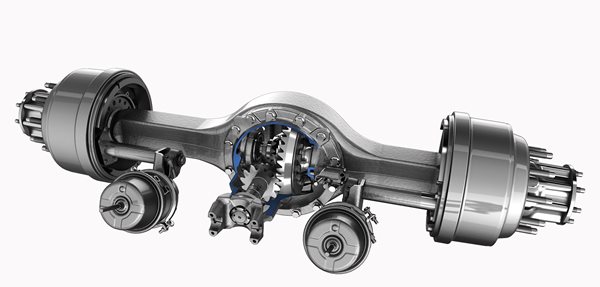
Lets talk about rear end ratios. Most people get confused about what the numbers mean when you talk about gear ratios and how they affect the drivability and perceived performance of their vehicle. I believe almost all vehicles have a gear ratio of some sort, even a go-cart has a gear ratio of some sort.
So what is a gear ratio? According to North Carolina State University: "The Gear Ratio is defined as the input speed relative to the output speed.". Using simple numbers if you had a gear ratio of 1:2 or 1 to 2 , that would mean if the input speed is 100 revolutions per minute (RPM) (the 1 of the formula) the output speed will be 200 RPM (the 2 of the formula). The formula numbers can change to meet the needs of the vehicle in question.
In our current truck the gear ratio is 2.5:1, our last truck had a 3.21:1. Typically when you ask someone what ratio is in their rear-end they will say 2.5, because in a vehicle the ratio is always _ :1, or _ to 1. The use of a ratio allows the vehicle builder to use different transmissions, engines and tires, depending on the needs of the owner. The smaller the number the higher or faster the gear ratio is. In theory, the higher the ratio the faster the vehicle will go, but it may seem underpowered in a hard pull. The lower the ratio the more power it will seem to have but it will not run very fast. It’s a case of using the ratio to get the most out of your engine for your specific operation.
When trying to determine what ratio you would need there are several factors that must be considered. You will need to determine how fast you want to drive, the tire revolutions per mile and the transmission ratio, yes the transmission has a ratio. The transmission is usually one of three drive ratio's, under drive, ie;1:2, made for very slow work like off road not very common. Direct drive,ie;1:1, this is the transmission ratio we have in our current truck, fairly common and becoming more so. Overdrive, ie;.75:1. Overdrive is probably the most common final drive for a transmission, there are several ratios for an overdrive transmission depending on the manufacturer.
If you want to find out what the ratio is in your truck you can, 1 ask your dealer, 2 there should be a label somewhere in the cab listing the ratio, 3 there is a formula you can use if you know all of the input numbers. Lets say you want to know the rear end ratio, using the formula it can be figured out. For example, you want to run 60 miles per hour , tire revolutions per mile are 518, transmission ratio is .76:1, and engine rpm is 1275. Let's figure it out, the formula is, rear end ratio = (60*engine RPM)/(tire RPM*transmission ratio*road speed). The 60 in the first part of the formula with the engine RPM is always 60 no matter what the other numbers are ( I'm not sure why but I'll bet an engineer could tell us). In our example it would be (60*1275)/(518*.76*60)= gear ratio. Working it out (76,500)/(23,620)= ratio of 3.23:1. This may not be the exact ratio but it will get you very close, the actual ratio was the 3.21 of our last truck, so the engine rpm may not have been exactly correct.
Lets see what it would be if we changed the engine rpm to 1325, (79500)/(23620)= 3.36 ratio. There are other formulas to determine every part of this formula if you know the other numbers. So if you know your trans ratio, axle ratio, tire rpm and engine rpm you can tell if your speedometer is correct. The formula for finding road speed is, Speed (mph) = (60*engine rpm)/(tire rpm*axle ratio*trans ratio). If you want to see what a tire size change will do to engine rpm, Engine rpm = (road speed*tire rpm*axle ratio*trans ratio)/60.
I didn't take any Algebra in school so when I first saw the formula I was a little confused about how to actually do the calculation. So here is what I found out, anything inside a set of parentheses ( ) is it's own calculation. The asterisk * means times or multiply, and the back slash / means divide. Example:
(60 x 1275 )= 76,500 / (518 x .76 x 60) = 23,620
76,500 / 23,620 = 3.23
Knowing these formulas will come in handy when spec'ing a truck in order to get the engine in the right RPM range for optimal fuel economy and performance. Just food for thought.